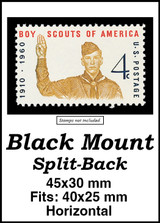U.S. #938
3¢ Texas Statehood
Issue Date: December 29, 1945
City: Austin, TX
Quantity: 170,640,000
Printed by: Bureau of Engraving and Printing
Printing Method: Rotary Press
Perforations: 11 x 10.5
Color: Dark blue
U.S. #938 commemorates the 100th anniversary of Texas statehood. The stamp pictures the U.S. flag with a ray shi... more
U.S. #938
3¢ Texas Statehood
Issue Date: December 29, 1945
City: Austin, TX
Quantity: 170,640,000
Printed by: Bureau of Engraving and Printing
Printing Method: Rotary Press
Perforations: 11 x 10.5
Color: Dark blue
U.S. #938 commemorates the 100th anniversary of Texas statehood. The stamp pictures the U.S. flag with a ray shining from the 28th star to the single star on the Texas state flag.
Texas Road to Statehood
Glory, God and gold was the motto of the Spanish explorers who arrived in Texas during the early 1500s. In 1519, Alonso Alvarez de Pineda mapped the gulf coastline from Florida to Mexico. Most historians believe the members of this expedition were the first Europeans to reach Texas. Many Spanish explorers set out into the interior of Texas looking for golden cities, called the Seven Cities of Cibola. In 1682, Franciscan missionaries built the first two missions in Texas. These expeditions and missions were the basis of Spains claim to Texas.
The French began to explore the area in 1685 and even built a mission there, Fort Saint Louis. Spain sent a force to remove the French, but Indians killed the settlers and destroyed the fort before they could arrive. By 1731, the Spanish had sent over 90 expeditions into Texas and had established missions in the central, eastern, and southwestern portions of the area.
In 1803, the United States made the Louisiana Purchase, buying 827,987 square miles of land from France. France had made claims involving Texas all the way to the Rio Grande. However, an 1819 treaty between the two nations fixed the southern boundary of the Louisiana Territory at the Sabine and Red rivers. Mexico became independent of Spain in 1821, and Texas became part of the Empire of Mexico. In 1824, Mexico became a republic.
In 1820, a Missouri banker, Moses Austin, obtained permission from Spanish officials to establish an American colony in Texas. His son, Stephen F. Austin, brought 300 families there. The colony grew rapidly. In 1823, he founded San Felipe de Austin in todays Austin County, which became the colonys seat of government. Soon, more Americans received land grants from Mexico. Between 1821 and 1836, the number of settlers grew to about 30,000 and most were Americans.
The Mexican government became concerned over the high percentage of Americans living in its territory. In 1830, Mexico officially halted American immigration. Relations between the settlers and the government quickly deteriorated. In 1834, a Mexican politician and soldier, General Antonio Lopez de Santa Anna, took over the Mexican government and established himself as a dictator. A year later, Texas declared its independence from Mexico.
After a few clashes between Texans and Mexican soldiers, Texas leaders organized a temporary government on November 3, 1835. Texas troops under Colonel Benjamin Milam captured San Antonio on December 11, 1835. Enraged, Santa Anna sent a large army to San Antonio to put down the uprising. Texan forces withdrew to the walls of the Alamo. From February 23 to March 6, 1836, Santa Annas forces attacked the fort until it finally fell. Many famous men died while defending the Alamo, including Jim Bowie, Davy Crockett, and William B. Travis. On March 27th, Santa Anna ordered 330 Texan rebels executed after they surrendered at Goliad. Rather than crush the independence movement, these actions galvanized Texan resolve. Texans rallied to the cries "Remember the Alamo" and "Remember Goliad". On April 21, Sam Houston led a smaller Texan army against Santa Anna's forces in a surprise attack at the Battle of San Jacinto. Houston captured Santa Anna and crushed his army. Texas had won its independence.
Texas faced many problems. It had no currency, and its economy was isolated. Indians and Mexicans staged raids against its people. At the first national Texas elections, voters chose Sam Houston as President, and also voted to join the United States. European powers were against Texas becoming a state, as they feared the U.S. would come to dominate the southwest. There was also political conflict in the U.S. about Texas. Texas law allowed slavery, so the South favored admission and the North was against it. Texas remained independent for 10 years. During that time, its population grew fast.
Texas was admitted to the Union on December 29, 1845. Mexico ceased diplomatic relations with the U.S. when Texas was admitted to the U.S. Boundary disputes erupted a short time later, and in 1846 the Mexican War began. By 1848, Mexico surrendered, signing the Treaty of Guadalupe Hidalgo. With this treaty, Mexico ended all of its claims to Texas and much of the Southwest. Texas gained a great deal of territory. During the 1850s, settlers poured into the western region of the state, and 89 new counties were organized.
Less 









